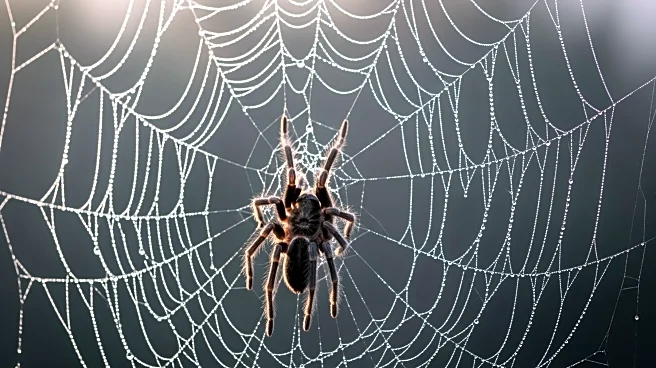What's Happening?
In California, tarantula mating season is underway, with male tarantulas leaving their burrows in search of mates. This period, which typically occurs from July through November, is marked by increased tarantula activity, especially after autumn rains.
Male tarantulas face significant risks during this time, as females may eat them if they are not receptive or even after mating. The mating process involves a courtship ritual where males use hook-like structures to hold females during coitus. California is home to several tarantula species, including the California ebony tarantula and the desert-dwelling Aphonopelma iodius.
Why It's Important?
Tarantula mating season offers a unique opportunity to observe these arachnids in their natural habitat, contributing to ecological understanding and public interest in local wildlife. The event highlights the complex behaviors and survival strategies of tarantulas, which are an integral part of the ecosystem. Understanding tarantula behavior can aid in conservation efforts and promote awareness of biodiversity. Additionally, the presence of tarantulas in urban areas poses challenges, as they may encounter hazards such as roads and swimming pools. This underscores the need for habitat preservation and public education on coexisting with wildlife.
Beyond the Headlines
The tarantula mating season also raises questions about the impact of urbanization on wildlife. As human development encroaches on natural habitats, species like tarantulas face increased risks. This situation calls for a balance between urban growth and ecological preservation. Furthermore, the fascination with tarantulas during mating season can foster a greater appreciation for arachnids and dispel common fears, promoting a more informed and respectful relationship with nature.













